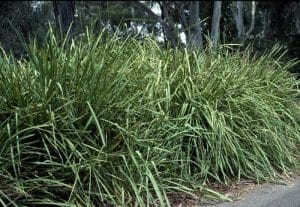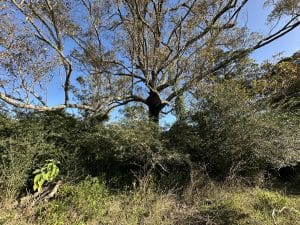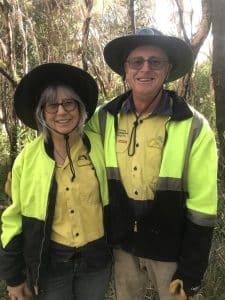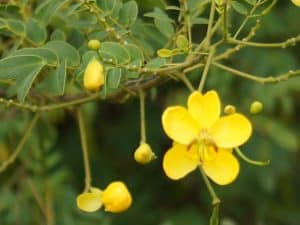Growing up in the Northern Rivers, Camphor Laurel, Cinnamomum camphora trees felt like a familiar friend. They were the boundary between my school and the school next door where all the fruit fights occurred, they were the big shady trees that created a tunnel of green on the long winding roads home. Little did I know, I would spend a good part of my adult life systematically removing them. They were deceptive friends, foes in fact.
In the 1800’s, Camphor Laurel was introduced into Australia from Asia as a garden ornamental because it was recognised as a fast growing tree that provided great shade, and a band aid fix for over clearing areas that trees could actually benefit humans. Camphor plantings then began in urban areas, public schools and on farms.
One of the earliest records of Camphor planted as an ornamental, was in Grafton. The Council of the Borough of Grafton adapted a by-law for planting and protection of trees in it’s streets and parks, after Grafton was initially stripped of it’s natural vegetation. Evidence of early plantings in Grafton suggests that among some native species, Camphor Laurel was planted in the mid to late 1870’s.
Schools in NSW and QLD were encouraged to plant on what was known as “Arbor Day” and planting operations were carried out in at least 601 schools on one particular day, with camphor trees among the species planted, to “better provide for the varying climatic conditions of different parts of the colony” (Stubbs, BJ 2012).
So here we are, with a large, prolifically seeding tree that features a myriad of weedy attributes which include-
- a tendency to form a monoculture
- a dense yet shallow root system and shady canopy that suppresses regeneration of native seedling
- the ability to destabilise stream banks due to the shallow root system and lack of nearby native ground cover
- enthusiasm for survival. Camphor can be difficult to remove and coppice easily after being cut down
It is that time of the year, when Camphor is growing and easily spotted from a distance by the bright green new flush.
Identification of Camphor Laurel-
- They area an evergreen tree growing to 20 metres with a large, spreading canopy.
- New leaves are bright green, easily spotted from a distance in spring and summer.
- Mature leaves are dark green and glossy on top, glaucous and silvery underneath.
- A fragrant camphor scent when crushed.
- Brown to grey trunk, increasingly furrowed with age.
- Small, round green to black fruits, attractive to birds


(L) Camphor Laurel leaves and fruit. Image: Sydney Weeds Network. (R) Underside of Camphor Laurel leaf. Image: S Bacque

Bark of Camphor Laurel Image: lepidoptera.butterflyhouse.com
Camphor Laurel has become naturalised in the coastal areas from Nowra on the NSW South Coast, to Cooktown in North Queensland, with the heaviest infestations in the Northern Rivers and Grafton area. It continues to spread southwards.
Camphor Laurel grows on a wide range of soil types, preferring flood plains and soils derived from basalt. It invades areas that have been cleared or disturbed and is also particularly common among watercourses.
Camphor should be controlled as soon as possible, as the older they get the harder they are to control. There are a number of techniques available such as cut stump, foliar spray application, basal bark or stem injection. For mature trees, stem injection is the most efficient.
For some detailed information on best practice Camphor control, please refer to this document. It is imperative to take no shortcuts when treating Camphor or it will come back with a vengeance for life.
References:
www.profiles.ala.org.au/opus/weeds-australia/profile/Cinnamomumcamphora
www.weeds.dpi.nsw.gov.au/Weeds/Details/28
www.countrywideweed.com.au/
Stubbs, B. J. 2012. Savior to Scourge: a history of the introduction of the camphor tree (Cinnamomum camphora) in eastern Australia. SCU Lismore
Feature image by Gum Trees and Galaxies





